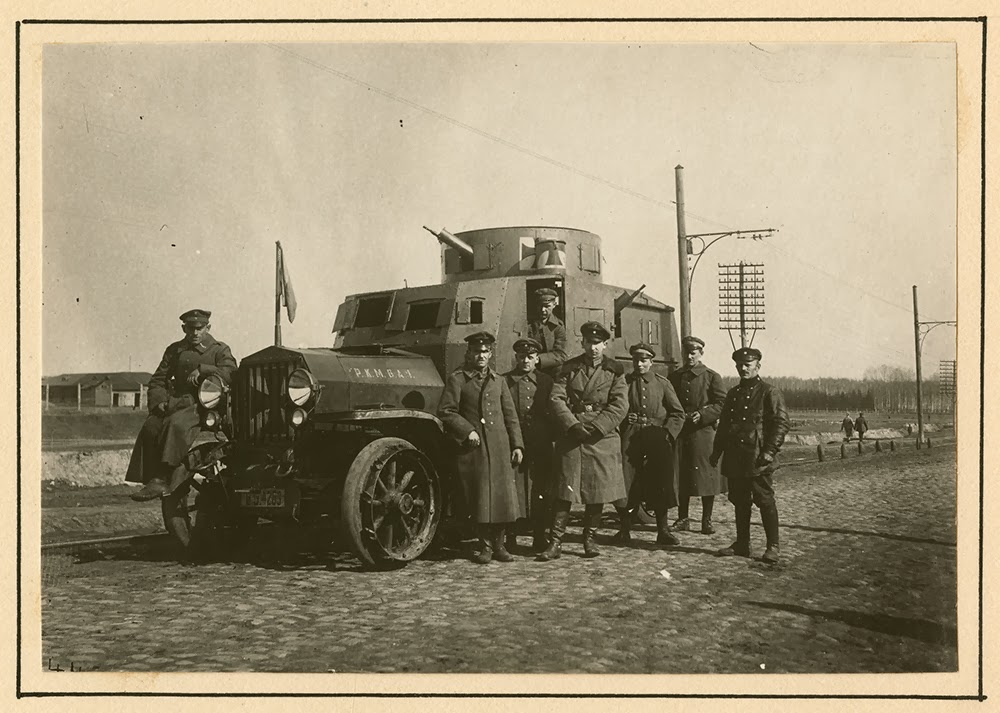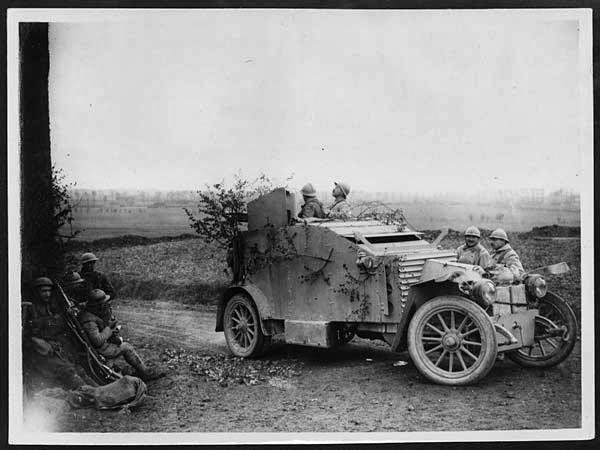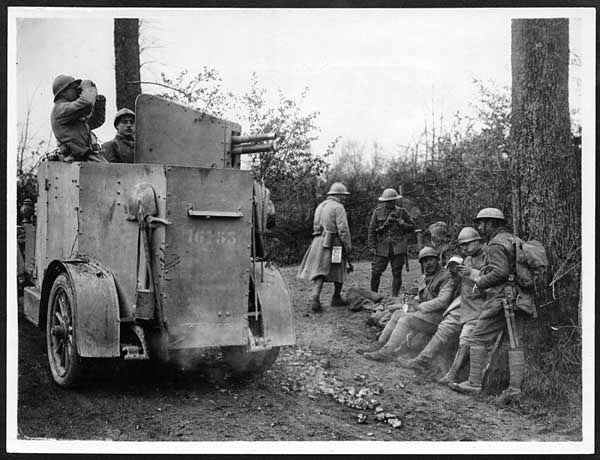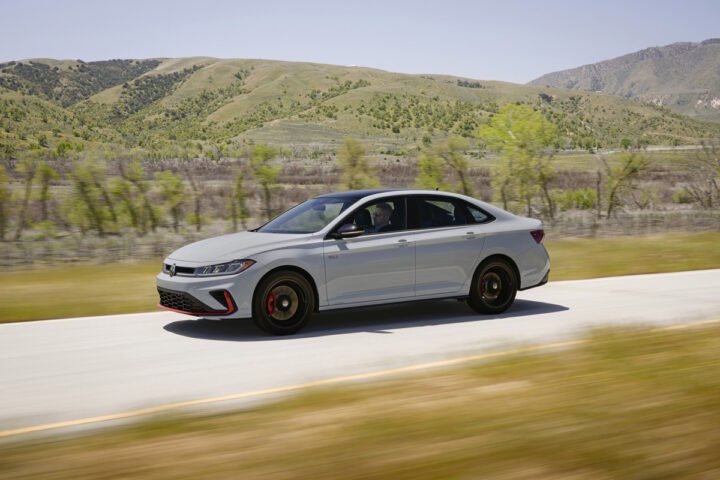World War I revolutionized the nature of warfare, ushering in an era of mechanized combat that forever altered the battlefield. It was the first conflict where fighter planes roared through the skies, chemical weapons unleashed unprecedented horrors, and the once-humble automobile was transformed into a lethal instrument of war—giving rise to the first machine-gun-equipped armored cars.
Initially, the vehicles that rolled into battle were not armored at all. In the earliest days of the war, automobiles were primarily used for reconnaissance, communication, and even daring rescue missions. One of the first recorded uses of armored cars in World War I came from the ingenuity of Wing Commander Charles Rumney Samson, a Royal Naval Air Service officer. In the summer of 1914, Samson, realizing the potential of mobile firepower, mounted a Maxim machine gun onto the back of his Rolls-Royce tourer and began conducting armed patrols across the French and Belgian countryside.
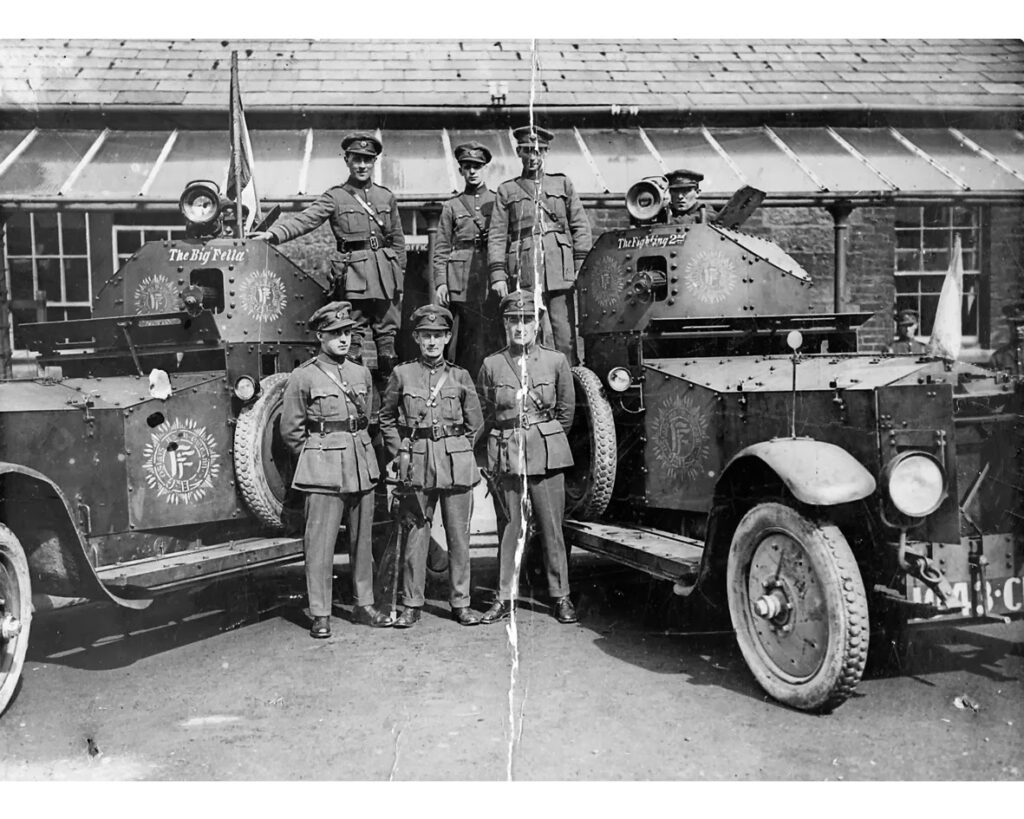
At first, Samson and his men operated out of privately owned vehicles, including his Rolls-Royce and a Mercedes, using them to rescue downed airmen and harass enemy positions. These makeshift battle cars, driven under the Royal Naval Air Service, became Britain’s first armored fighting vehicles. Samson’s success in the field quickly caught the attention of military strategists, prompting the Royal Navy to take the next step—commissioning purpose-built armored cars and trucks for the Royal Marines. This initiative laid the foundation for the formal development of armored car divisions, influencing mechanized warfare for decades to come.

The rapid evolution of armored cars during World War I was just the beginning. As the war dragged on, nations refined and expanded their use, experimenting with better armor, more powerful weaponry, and strategic mobility. What started as a field improvisation by a daring commander soon became an essential component of modern warfare—paving the way for the tanks and mechanized infantry that would dominate battlefields in the conflicts to come.
Most of these early armored cars looked like boilers on wheels, but they changed the way battles were fought. The Belgian Army tested the early concept in 1914 called the “Minerva Armored Car”, essentially militarized touring vehicles dressed up for war. Lieutenant Charles Henkart arranged for two of his civilian Minerva Motor Works tourers to be armored; while those two cars were bespoke, Minerva would go on to produce a standard design that would go on to be used with great success by the Belgian Cavalry, organized in three-cars platoons that could conduct hit and run raids, rescue missions, and reconnaissance.
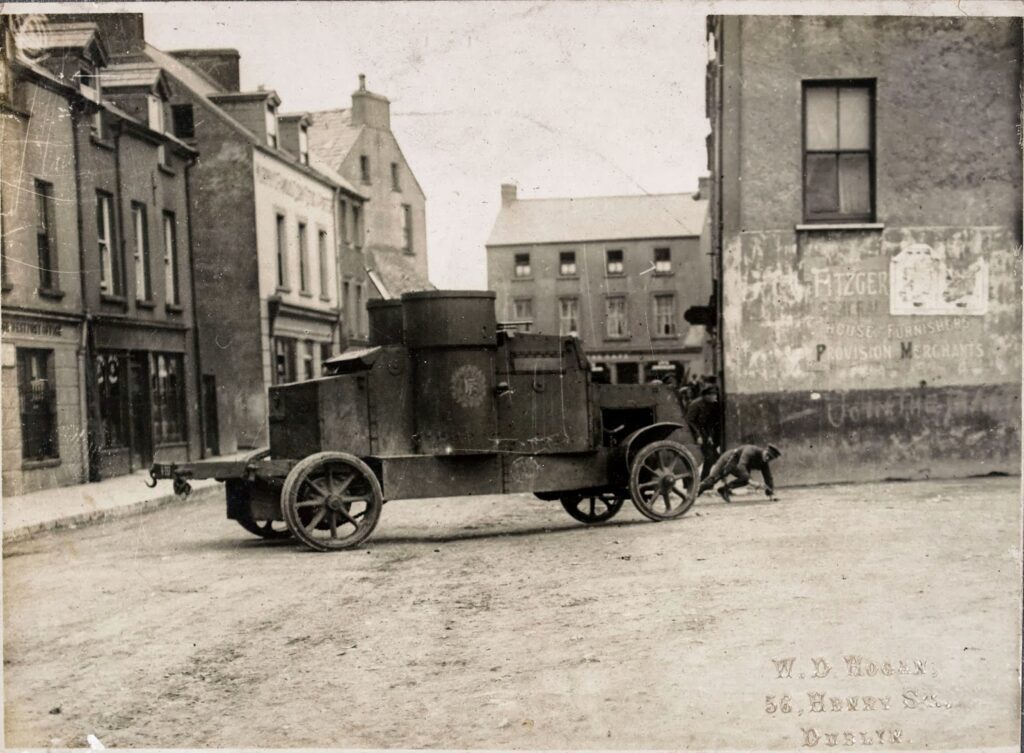
Another early design employed by the Canadian Automobile Machine Gun Brigade was the Autocar, an open-top armored truck with two machine guns mounted on it. The Brigade also had officers’ cars and its own ambulance and played a significant role in halting the German Spring Offensive of 1918.
But as the war wore on more advanced designs were produced. When the European theater shifted to trench warfare, armored cars were shifted to Russia, China, and the Middle East, where Lawrence of Arabia said, “A Rolls in the desert is above rubies.” Many cars sent to the Middle East remained in service through World War II.
The Germans also built their own armored vehicles like the Panzerkraftwagen Ehrhardt E-V/4, which weighed nearly 9 tons, had a crew of eight, and could support up to three machine guns. The E-V/4 was used in Germany for internal policing until the mid-1930s, serving a similar role as a modern SWAT vehicle.
Check out more photos of the Armored Cars of WWI:
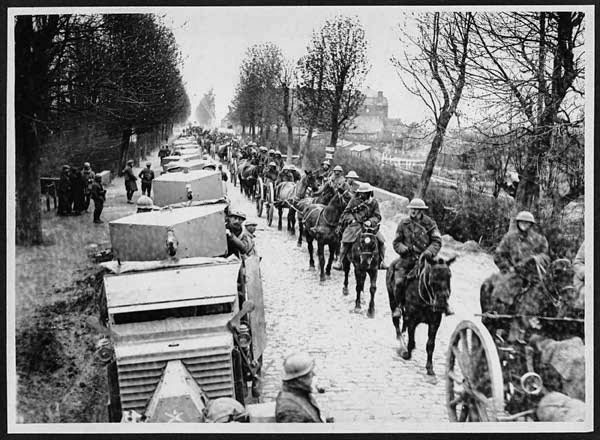
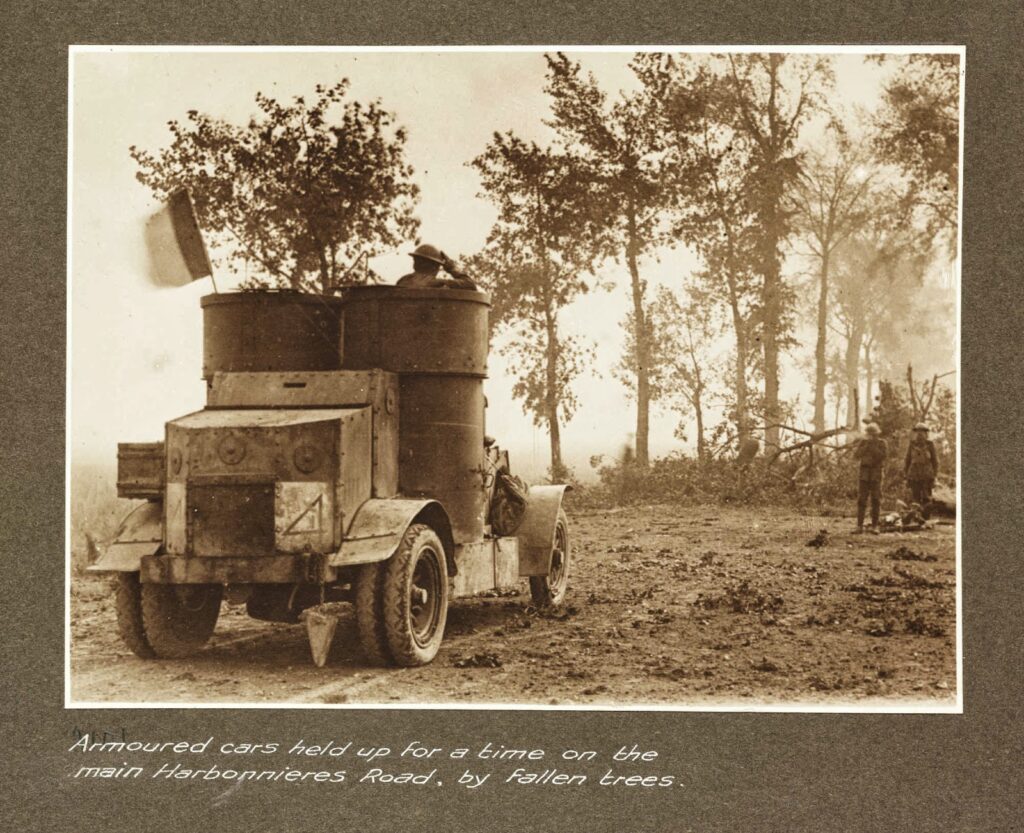
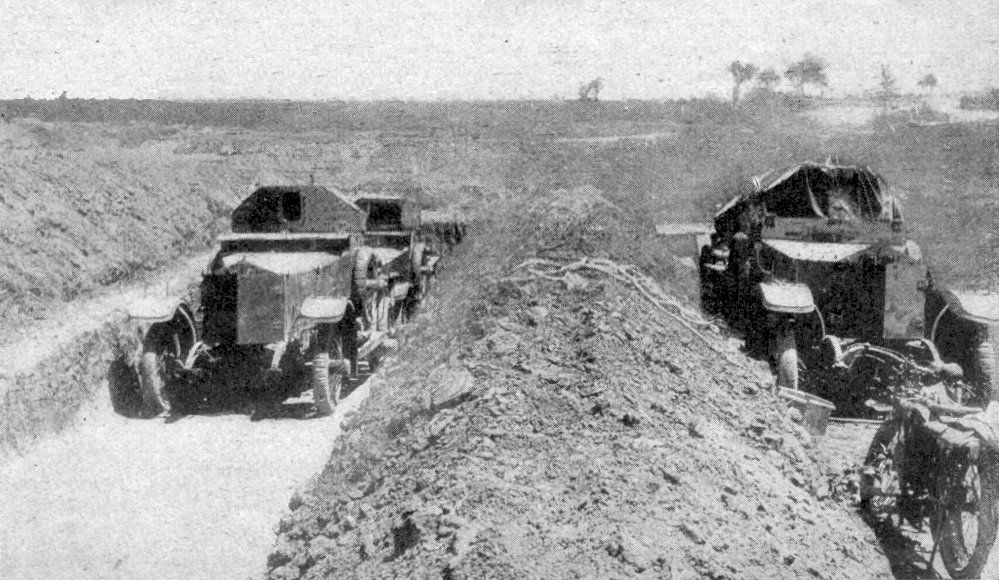
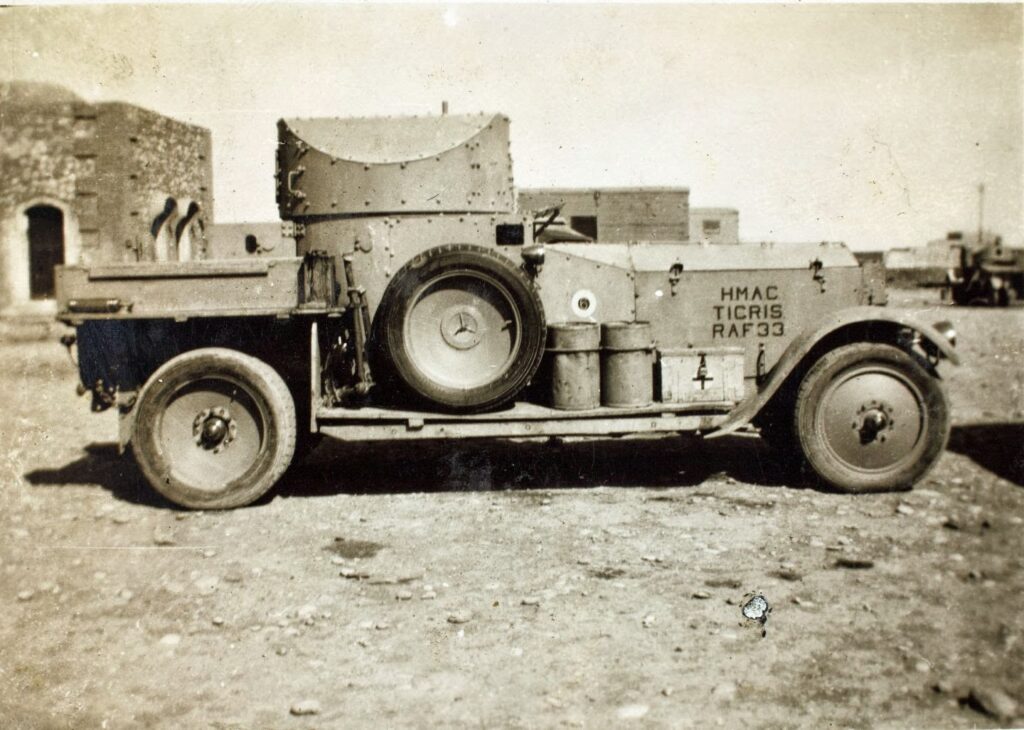
Rolls-Royce: HMAC (His Majesty’s Armord Car) Tigris
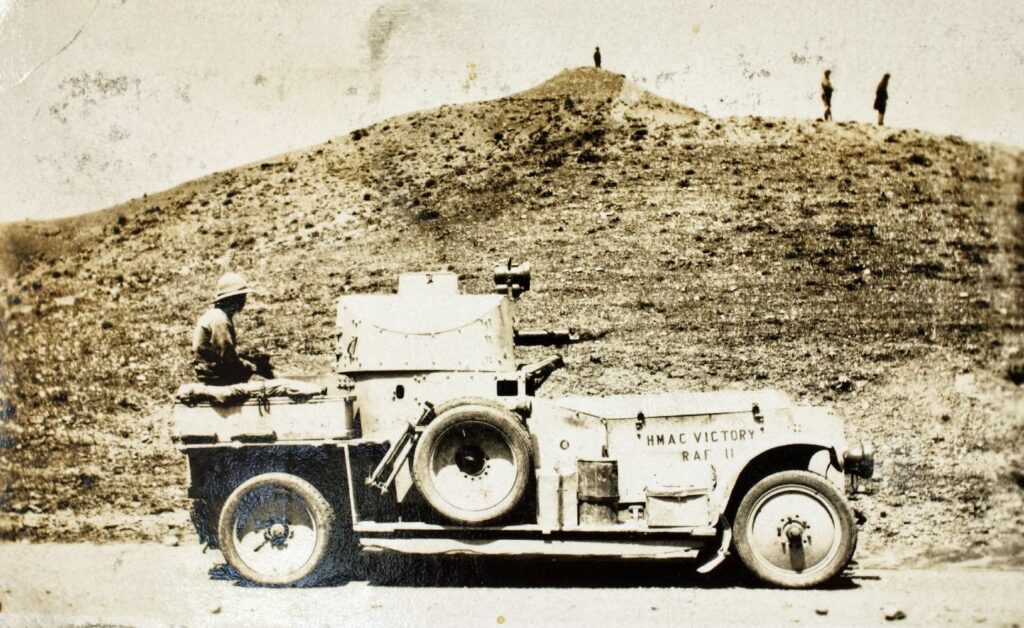
Rolls-Royce HMAC Victory
